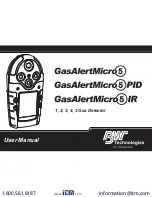
9
LINCE ITALIA S.p.A.
Fig. 8
A
B
minato 1-2 (v. fig. 5).
In una installazione tipica questo morsetto deve essere collegato
ad una linea attiva 24 h.
La procedura da seguire è la seguente:
1) effettuare tutte le prove di portata necessarie per il
funzionamento desiderato;
2) riaprire il coperchio e attivare la modalità Antimask (DIP A2);
3) avvitare immediatamente il coperchio (al massimo entro 10
secondi);
4) tenersi lontano almeno 1 metro dalla parte frontale del
rilevatore per circa 4 minuti.
Il circuito antimascheramento ad IR attivi genera un segnale di
allarme sabotaggio quando un oggetto viene posto adeso alle
lenti (esempio - fig. 9).
Il DIP-switch A2 permette di regolare questa funzione.
Qualsiasi tentativo di manomissione, apertura coperchio e strap-
po dal muro (esempio - fig. 10) viene rilevato dal sensore ac-
celerometrico di posizione che genera un segnale di allarme
sabotaggio.
NOTA:
Il rilevatore esce automaticamente dalla segnalazione
di antimask dopo una regolare rilevazione.
Fig. 9
Fig. 10
The antimasking affects the terminal block normally closed mar-
ked AM (see fig. 5).
For a standard installation please connect this terminal block to
24 hrs active line.
Follow the procedure below:
1) run all necessary range tests for the required type of
operation;
2) open the lid again and start Antimask mode (DIP 4);
3) immediately screw the lid back on (within a max of 10
seconds);
4) remain at a distance of at least 1 m from the front part of the
detector for approximately 4 minutes.
When an object is placed adherent to the lens surface the IR
Anti-Masking circuit will generate a tamper alarm (e.g. fig. 9).
DIP-switch A2 sets this function.
Any tampering attempt, cover opening and wall pull-up (e.g. fig.
10) will be detected by accelerometer sensor that will generate
a tamper alarm.
NOTE:
The detector automatically exits antimask signaling after
a regular detection.
2.5 INSTALLAZIONE TIPICA
2.5 TYPICAL INSTALLATION
A Installazione porta
B Installazione finestra
A Door installation
B Window installation





























